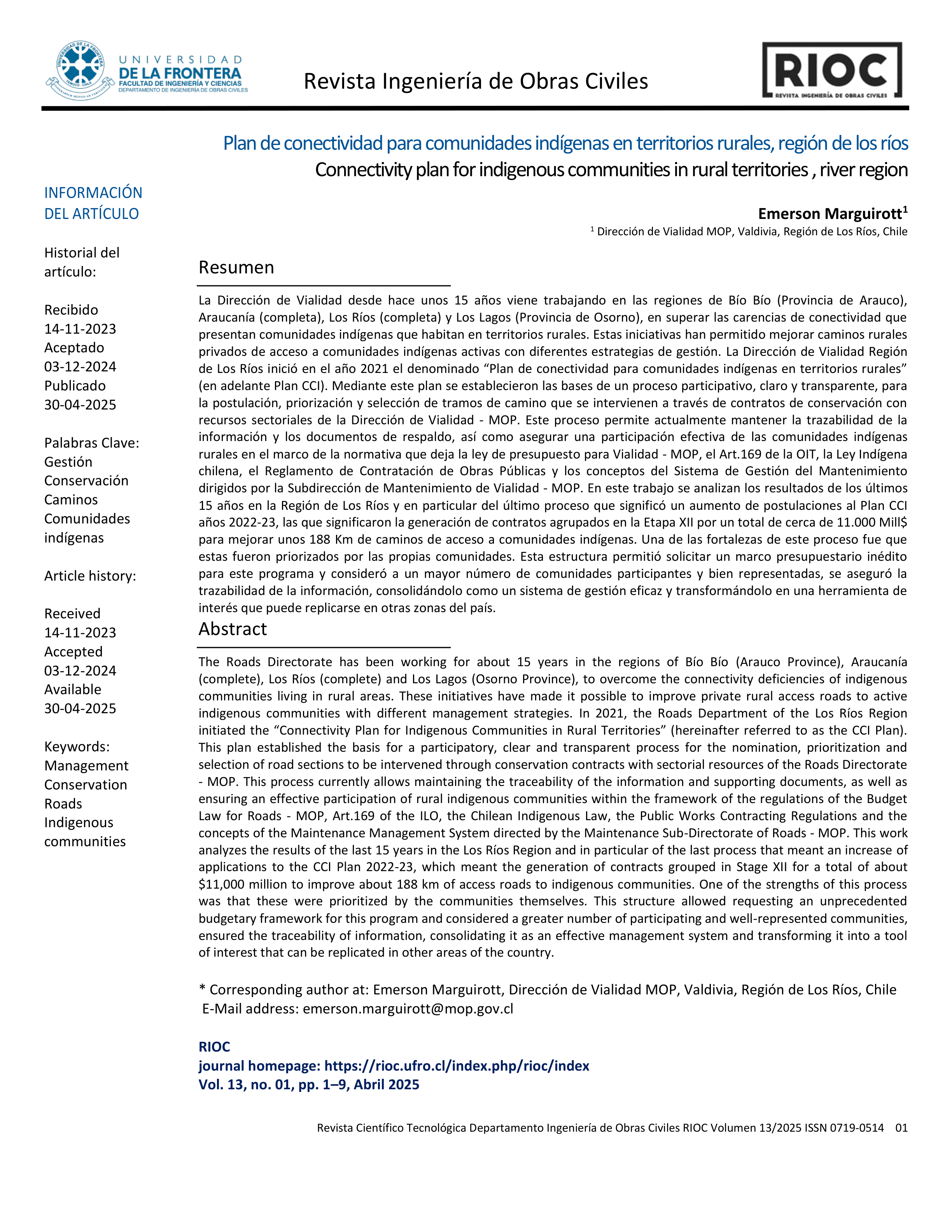Connectivity plan for indigenous communities in rural territories , river region
Keywords:
Management, Conservation Roads, Indigenous communitiesAbstract
The Roads Directorate has been working for about 15 years in the regions of Bío Bío (Arauco Province), Araucanía (complete), Los Ríos (complete) and Los Lagos (Osorno Province), to overcome the connectivity deficiencies of indigenous communities living in rural areas. These initiatives have made it possible to improve private rural access roads to active indigenous communities with different management strategies. In 2021, the Roads Department of the Los Ríos Region initiated the “Connectivity Plan for Indigenous Communities in Rural Territories” (hereinafter referred to as the CCI Plan). This plan established the basis for a participatory, clear and transparent process for the nomination, prioritization and selection of road sections to be intervened through conservation contracts with sectorial resources of the Roads Directorate - MOP. This process currently allows maintaining the traceability of the information and supporting documents, as well as ensuring an effective participation of rural indigenous communities within the framework of the regulations of the Budget Law for Roads - MOP, Art.169 of the ILO, the Chilean Indigenous Law, the Public Works Contracting Regulations and the concepts of the Maintenance Management System directed by the Maintenance Sub-Directorate of Roads - MOP. This work analyzes the results of the last 15 years in the Los Ríos Region and in particular of the last process that meant an increase of applications to the CCI Plan 2022-23, which meant the generation of contracts grouped in Stage XII for a total of about $11,000 million to improve about 188 km of access roads to indigenous communities. One of the strengths of this process was that these were prioritized by the communities themselves. This structure allowed requesting an unprecedented budgetary framework for this program and considered a greater number of participating and well-represented communities, ensured the traceability of information, consolidating it as an effective management system and transforming it into a tool of interest that can be replicated in other areas of the country.
Downloads

Downloads
Published
How to Cite
Issue
Section
License
Copyright (c) 2025 Emerson Marguirott

This work is licensed under a Creative Commons Attribution 4.0 International License.
The authors who publish in this journal accept the following conditions:
- The authors retain the copyright and assign to the magazine the right of the first publication, with the work registered with the Creative Commons attribution license, which allows third parties to use the published information whenever they mention the authorship of the work and the First publication in this journal.
- Authors may make other independent and additional contractual arrangements for non-exclusive distribution of the version of the article published in this journal (eg, include it in an institutional repository or publish it in a book) as long as it clearly indicates that the work Was first published in this magazine.
- Authors are encouraged and encouraged to publish their work on the Internet (for example, on institutional or personal pages) before and during the review and publication process, as it can lead to productive exchanges and a greater and faster dissemination of work Published (see The Effect of Open Access).







